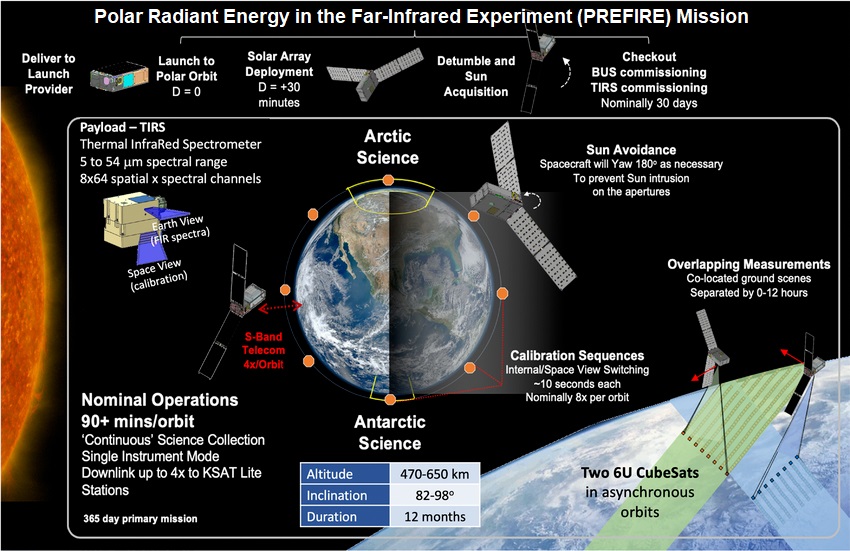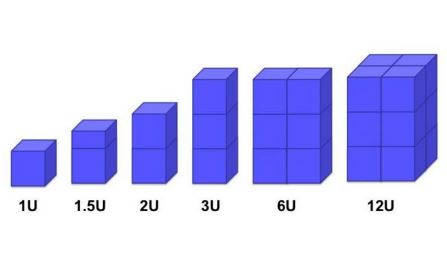Note4Students
From UPSC perspective, the following things are important :
Prelims level: PREFIRE Mission, Cubesats, Heat Budget of Earth

Why in the News?
NASA launched the ” PREFIRE mission”, deploying twin CubeSats to study heat emissions in the Arctic and Antarctic regions, aiming to enhance climate research.
What are CubeSats?
|
About PREFIRE Mission
- Jointly developed by NASA and the University of Wisconsin-Madison.
- It aims to investigate and comprehend the intricate dynamics of heat emissions from Earth’s Polar Regions, specifically focusing on the Arctic and Antarctica.
Components:
- CubeSats: PREFIRE employs shoebox-sized CubeSats, each measuring around 6U (6 units), equipped with advanced instrumentation to facilitate data collection.
- They measure around 90 cm in height and nearly 120 cm in width when the solar panels, which will power the satellite, are deployed.
- The two satellites will be placed in a near-polar orbit (a type of low Earth orbit) at an altitude of about 525 kilometres.
- Thermal Infrared Spectrometers (TIRS): Each CubeSat is outfitted with a Thermal Infrared Spectrometer, meticulously engineered to measure far-infrared radiation emitted by the Polar Regions.
Mission Objectives:
- Investigate heat radiated from Earth’s Polar Regions into space and its impact on climate.
- Employ thermal infrared spectrometers to measure far-infrared energy emitted by Earth’s surface and atmosphere.
- Improve understanding of the greenhouse effect at the poles and its implications for climate change.
- Enhance climate and ice models to predict changes in sea level, weather, snow, and ice cover in a warming world.
Why study heat budget of the Poles?
|
Significance of PREFIRE
- PREFIRE’s observations will enhance predictions of climate and environmental changes, aiding in mitigating the effects of global warming.
- Data collected will contribute to updating climate models and improving understanding of Earth’s atmospheric dynamics.
PYQ:[2017] What is the purpose of ‘evolved Laser Interferometer Space Antenna (eLISA)’ project? (a) To detect neutrinos (b) To detect gravitational waves (c) To detect the effectiveness of missile defence system (d) To study the effect of solar flares on our communication systems |
Get an IAS/IPS ranker as your 1: 1 personal mentor for UPSC 2024

